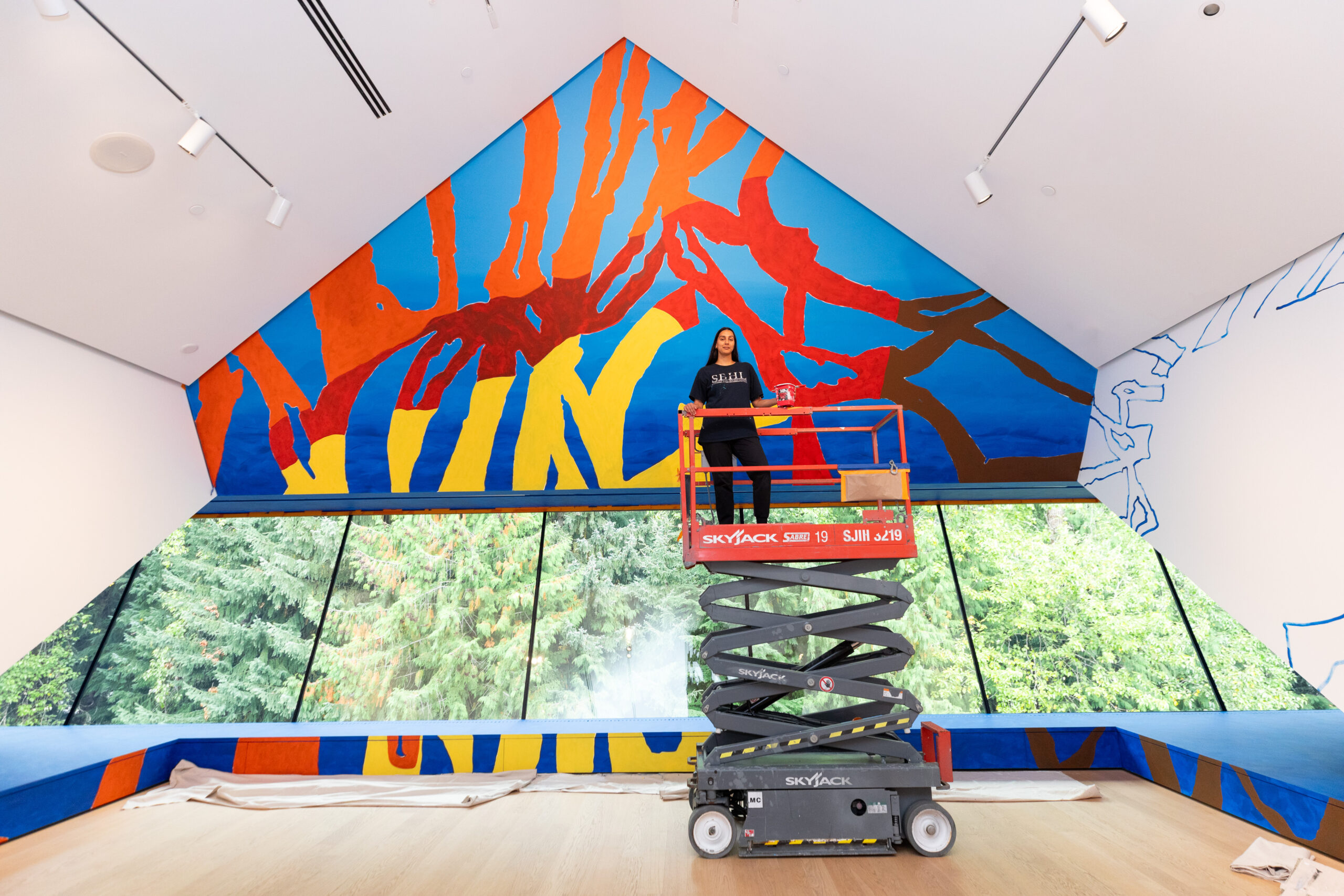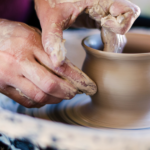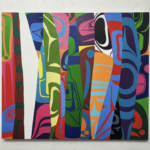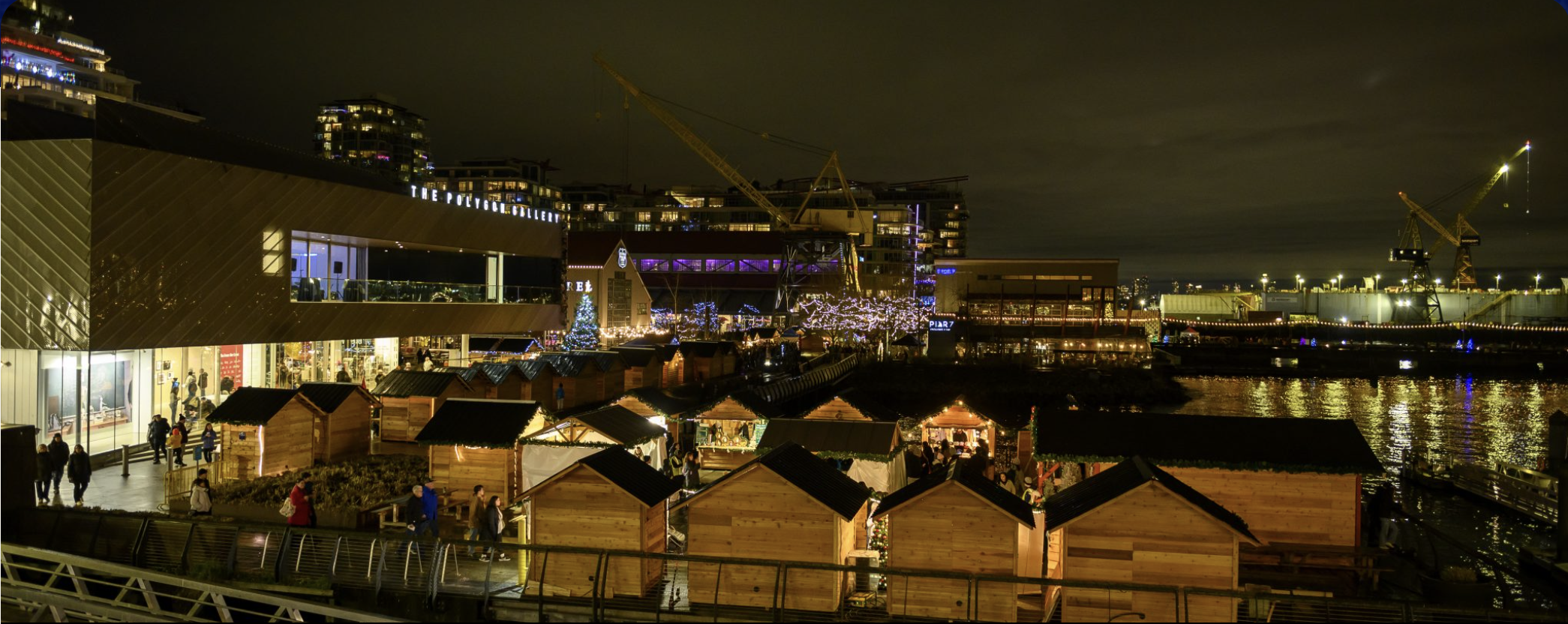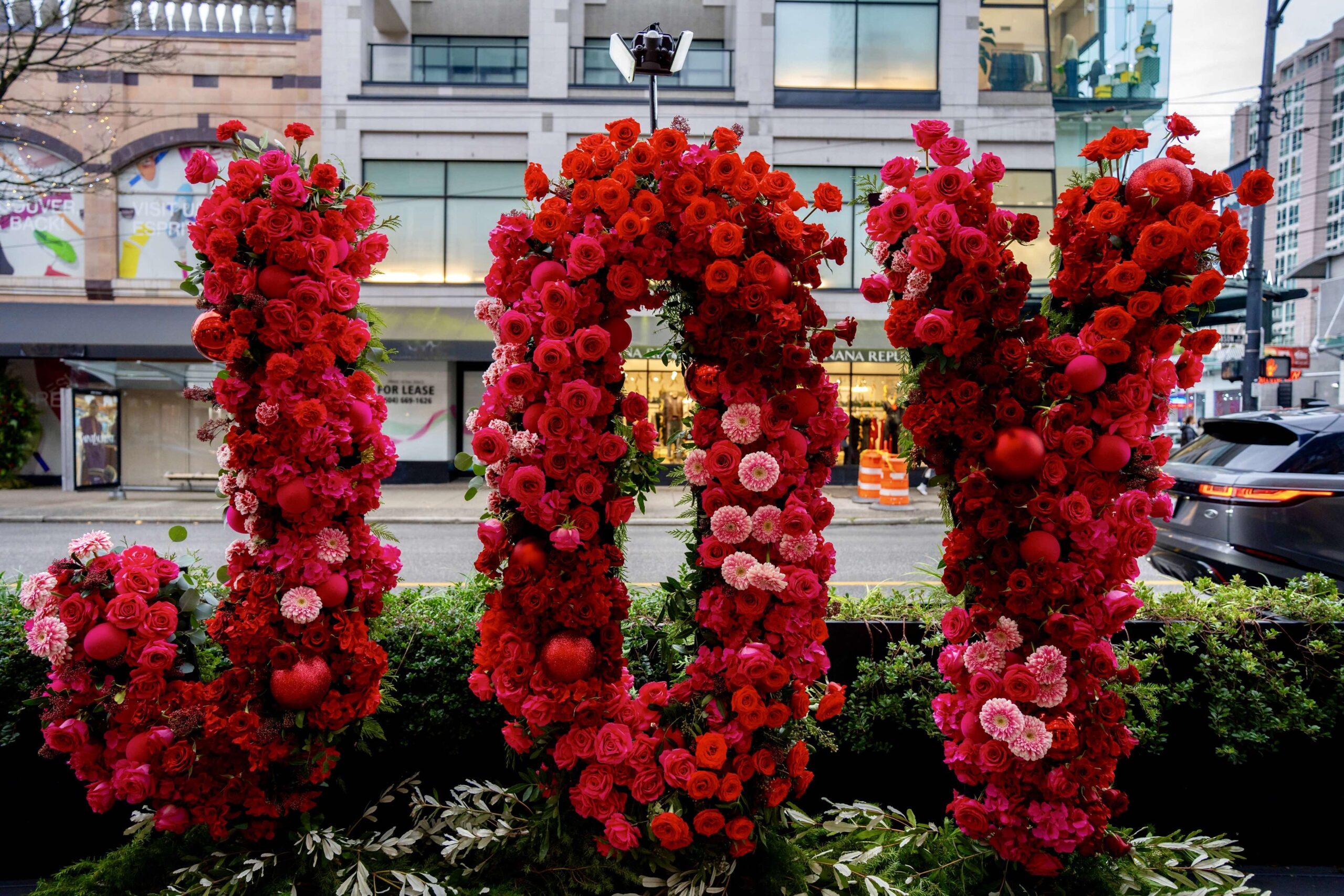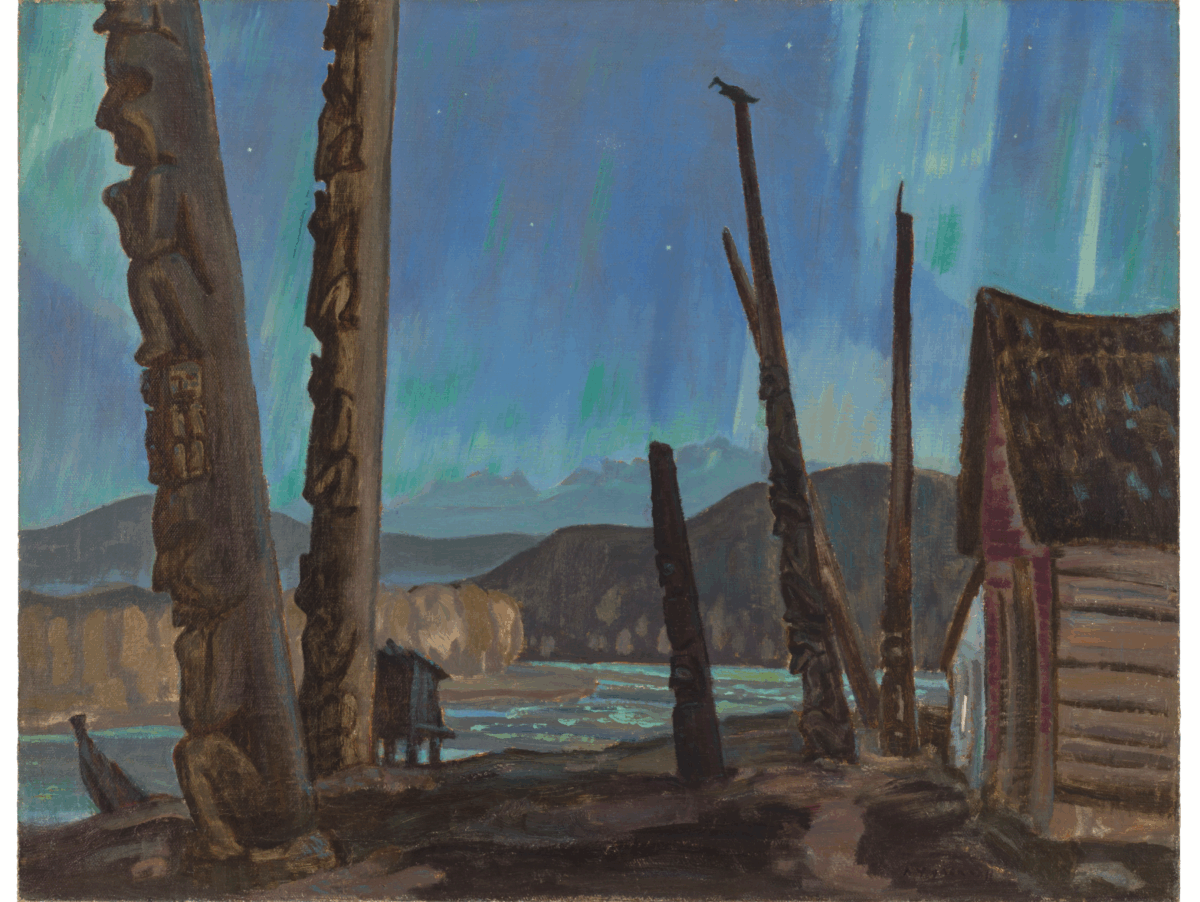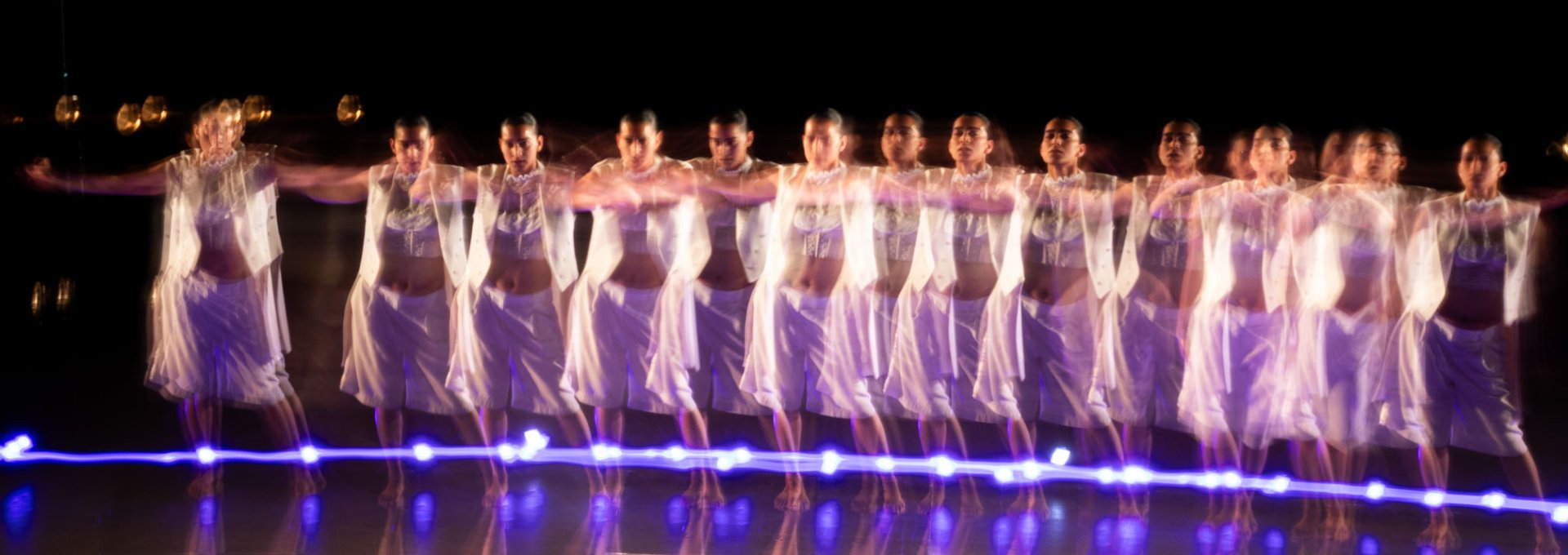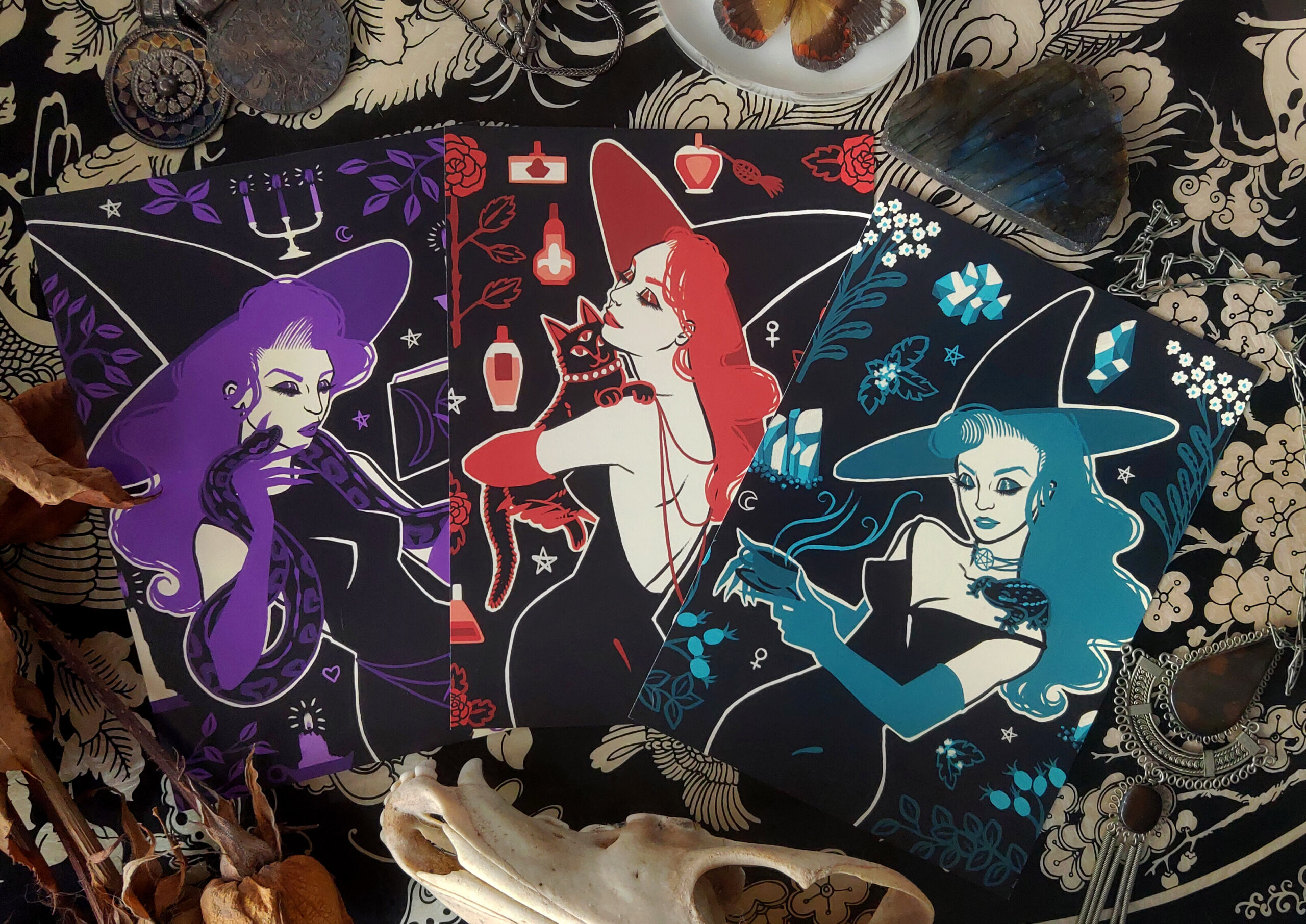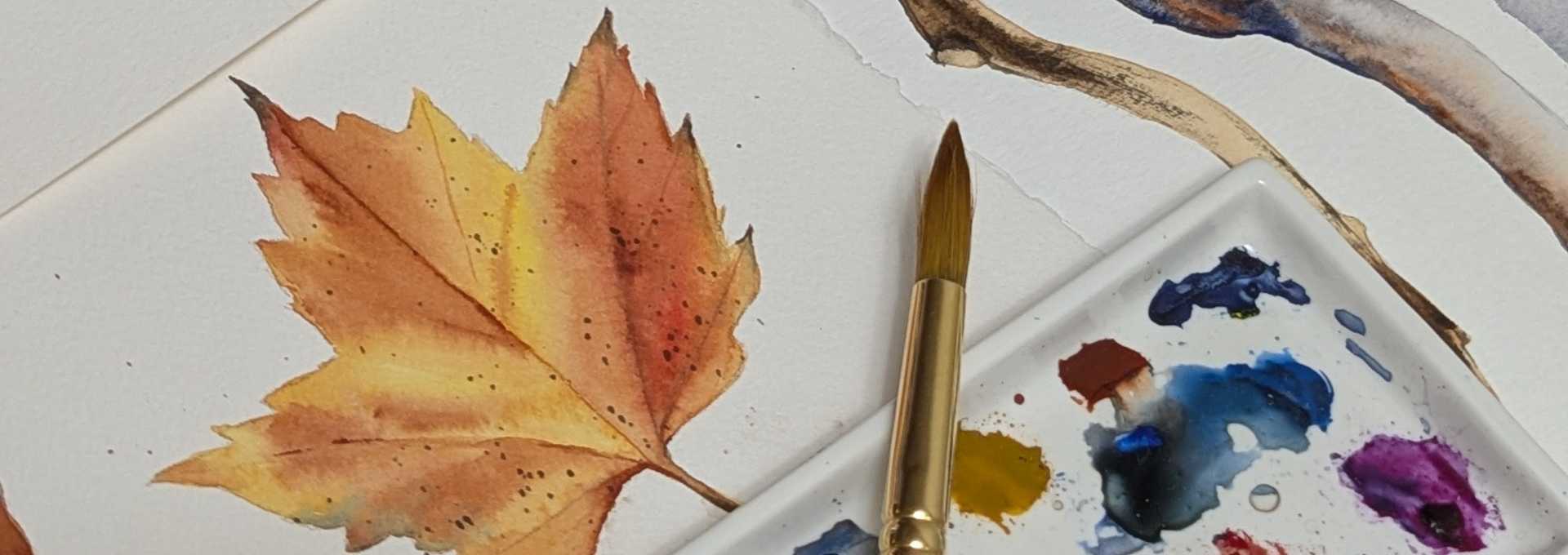Before eagerly heading to the Audain Art Museum in Whistler, I had the pleasure of having an insightful conversation with artist Russna Kaur, about her first major exhibition, Pierced Into The Air, The Temper and Secrets Crept In With A Cry!
Her visual voice is rich with vibrant colour, intricate lines, and bold textures, and this exhibition marks the first time that her new works have been shown alongside her older ones. This solo presentation acts as a personal and artistic reveal—an opportunity for her voice and artistic evolution to take center stage.
Inspirations: Creative Process and Material Exploration
Kaur’s works, bursting with widely varying hues, conceal deeper layers of emotion and narrative beneath their vibrant façades. The artist explores the intersections of her identity—personal expression, familial expectations, and generational memory—manifesting through a symphony of lines, textures, and shapes that carry both weight and lightness. Upon entering the gallery, the exhibition unfolds like a carnival of colours and introspection.
“Growing up in Brampton, Ontario, Kaur spent a considerable amount of time at her mother’s Indian bridal boutique, surrounded by textured fabrics while engaging in intergenerational dialogues with women whose roots resemble her own. Kaur translates these textures and complexities of her upbringing into a material vocabulary. She combines the rich textures of raw silk, cotton, and organza with the more resistant surfaces of cold wax, sawdust, and wood panels. The elegant fabrics reflect the nurturing yet demanding role she assumed at home. Meanwhile, the more abrasive materials represent the resistance and personal sacrifices, capturing the friction and struggle inherent in her responsibilities. This combination of contrasting textures in her work also reveals the intricate balance between obligation and self-assertion. As the eldest daughter in a Punjabi immigrant family in Canada, the artist found herself navigating a path shaped by the underlying currents of generational trauma, carrying the weight of enduring demands and responsibilities that had been unceremoniously thrust upon her, as they had been onto her matrilineage.” *Text from the exhibition literature.
Kaur’s storytelling extends beyond her individual experience. Her exploration resonates with broader themes of the pressure to conform, the desire for self-expression, and the search for autonomy. Loosely taking from Virginia Woolf, I connected my experience to the concept of A Room of One’s Own, feeling its themes echoed throughout the show—symbolizing the freedom and space Kaur carves out for herself through her art, both literally and metaphorically. Here, Kaur takes control of her narrative, asserting her independence in a world filled with external demands.
One standout piece, A Flashing Red Light, exemplifies this. It invites the viewer to pause and reflect, acting as a cautionary sign while simultaneously creating a reconciling state of rebirth amid the colourful, chaotic world Kaur explores. The work speaks to the layers of Kaur’s personal history and internal landscape, suggesting that what we see on the surface is only a fragment of the story beneath.
The exhibition is not just a collection of paintings, but a deeply introspective journey, where memory, identity, and expression collide, question, and come together. Kaur’s ability to piece together fragmented canvases into cohesive wholes mirrors her exploration of life’s complexities. The exhibition feels like a homecoming, a puzzle finally put together, yet still filled with the mystery of what lies within.
Architectural Integration: A Transition Beyond the Canvas
For Kaur, the museum’s architecture played a crucial role in shaping the dialogue between her pieces.
“The opportunity to engage with the architecture of the Audain’s Upper Gallery was such a huge consideration when thinking about which paintings were going to be in the show. To have these really big walls with all these interesting ways that their angles intersected, it was an exciting opportunity to play with scales,” shared Kaur.
Ascending the quiet staircase leading to the Upper Gallery is where the depth of her statement becomes apparent. The architectural lines—sharp and dynamic—serve as a prelude to the exhibition, subtly evoking flowing, spiraling expressionist forms. The space felt less like a backdrop and more like an extension of the artwork itself, immersing the viewer in a visceral experience rather than simply presenting objects to observe.
When asked about when she started working beyond the canvas, and what compelled her to do so, Kaur had this to say:
“With my upbringing—being the eldest daughter in a Punjabi family, came with a lot of responsibilities. There were moments of freedom, for sure, but there were also moments of restriction. Doing what you’re told, not rocking the boat, or really expressing yourself. I tried to push those boundaries in terms of my painting practice. Painting is the space I can express myself. It is my real form of expression or communication. To continue or extend the painting means it can grow beyond its originally intended surface, and the walls become another opportunity to play and experiment with the question of what happens if a painting were to break through the restriction of the edge of the canvas. What does that look like?”
Emphasizing the importance of abstraction as a way to think for oneself and communicate indirectly through color, line and texture, the first time Kaur experimented with extending the painting onto the gallery wall was soon after graduating with her Master’s from Emily Carr University, at her show at the Fort Gallery, Langley, in 2019. She extended not only to the gallery walls, but the floor and the ceiling. It was a small space and the perfect canvas for Kaur to experiment with this process.
Titles and Practice: Treating Text As Another Form Of Mark-Making
Through the relationship between marked lines and written letters, Kaur’s practice uncovers personal identity found within and circumstances tied to our communal lives.
“A lot of my titles, not only for my shows, but my paintings as well, come from a side practice of creating poetry through a process of reduction. It can be called redacted poetry or blackout poetry. But essentially, I encounter or find a text and cross out words to reveal a new meaning. Instead of starting with a blank paper where you’re adding words, I use found text from various sources, isolate descriptive words that are most interesting to me, and rearrange them to create a new meaning out of pre-existing text. In a lot of ways this reflects the way my paintings are constructed, especially the larger scale works which are made of smaller surfaces that come together, almost like a puzzle, to create a larger composition.”
Lines dominate the space in Kaur’s works, feeling almost alive as they trace the multiple paths one’s life can take. Some lines stretch long, their endpoints unseen, while others end abruptly. The varied thickness of these lines speaks to the significance of memories—some bold and foundational, others faint and ephemeral. Standing before these multi-layered, multi-textured works, it feels as if Kaur magnifies the intangible complexities of our inner lives, presenting them for examination in a way that feels both universal and deeply personal.
When asked to describe the show in three words, Kaur said, “Immersive, experimental, and textured.”
You can view Pierced into the air, the temper and secrets crept in with a cry! until January 27, 2025.
For more information about the show, visit the audainartmuseum.com
Words by Natasha Ponda.








